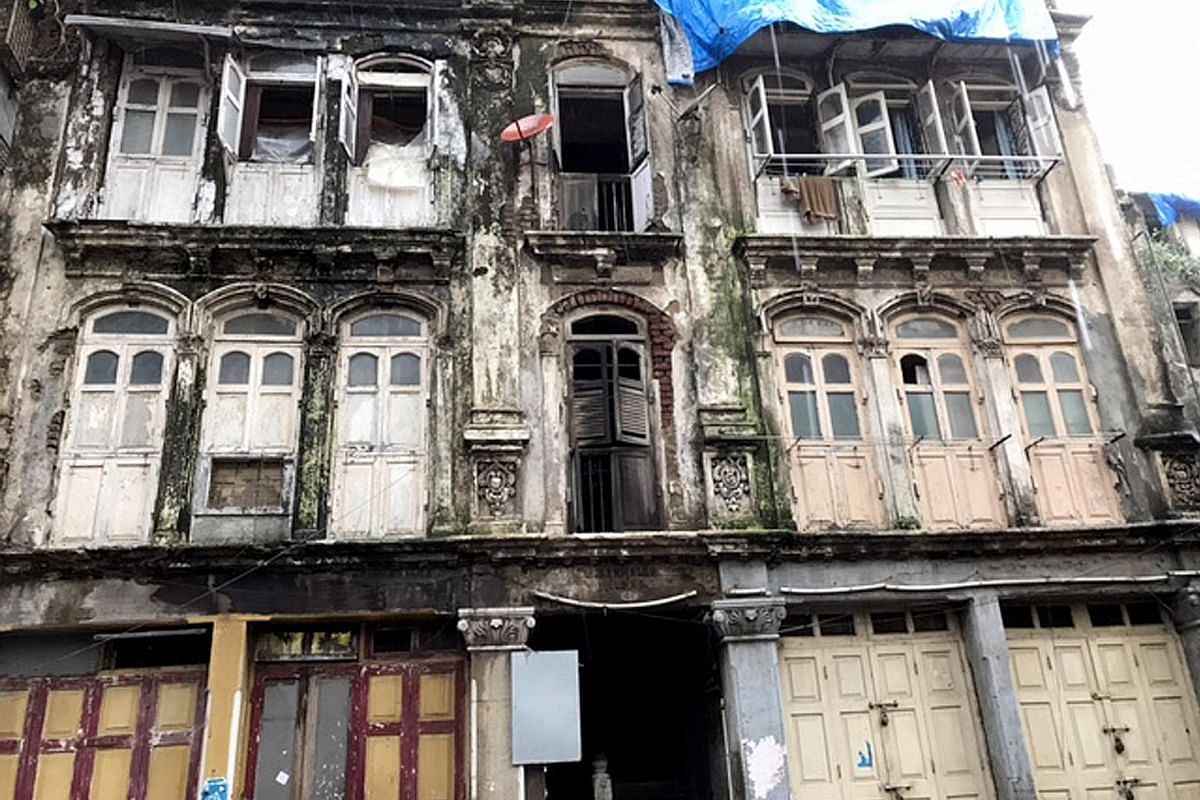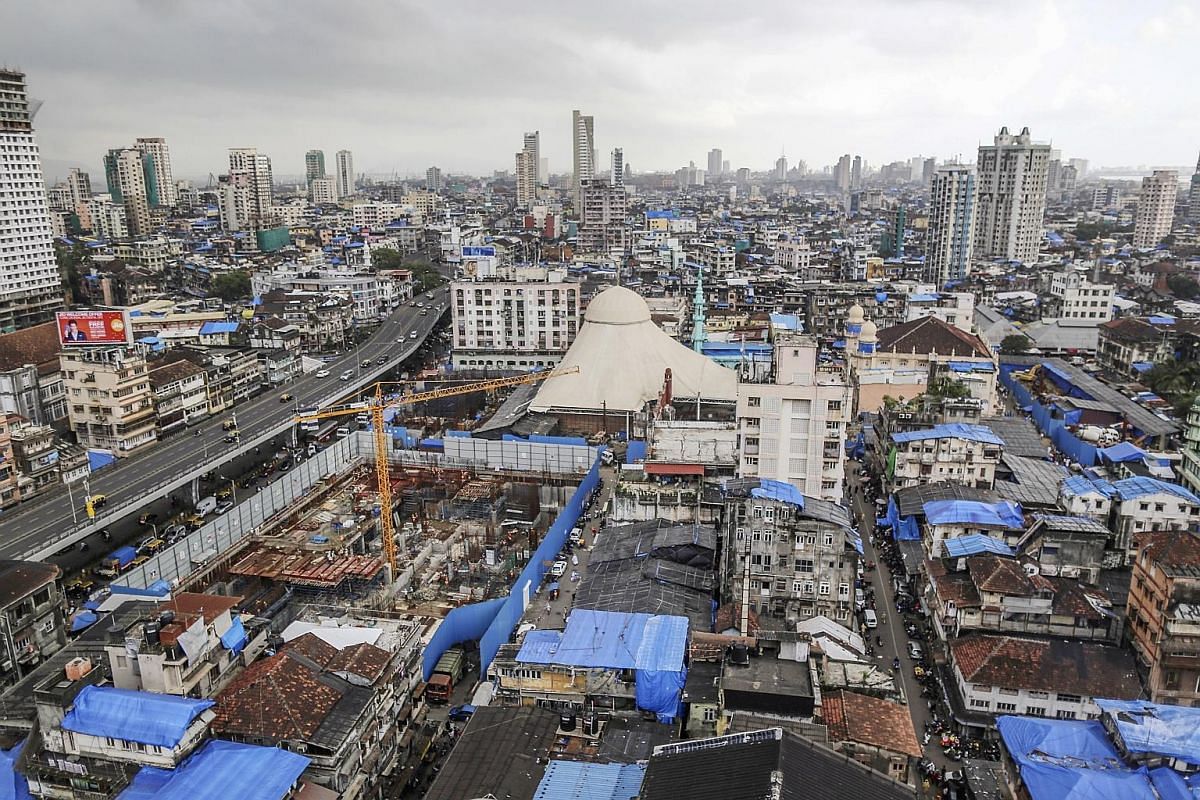-
3,200
-
Number of families living in Bhendi Bazaar, a 6.8ha district.
1,250
Number of shops in the area which are poised for transformation in what is touted to be the largest urban redevelopment in India.
$836m
Cost of the urban redevelopment project, expected to be ready in 10 years.
WORLD FOCUS: Urban Asia
Makeover for old Mumbai quarter
Over three decades, the Asia-Pacific's urban population has ballooned by a billion people, and it is expected to grow by another billion by 2040. By this year, half of the region's population will be living in cities. The Straits Times presents a series highlighting Asian cities and ways to tackle pressing urban issues. This final instalment looks at how a charitable trust is taking on the biggest housing redevelopment project in India.
It is cramped, dirty and smelly inside the colonial-era low-rise buildings in Bhendi Bazaar in the heart of Mumbai.
Thousands live in tiny rooms in these buildings, even though more than 80 per cent of the 250 buildings have been declared unfit for living. They could even be dangerous - one of them collapsed after heavy rain last August, killing 33 people. The five-storey building built nearly a century ago had been termed dangerous to live in since 2011.
Mr Idris Abbas, 57, who works in the embroidery industry, lives in one of Bhendi Bazaar's shophouse-like buildings, where a dimly-lit hallway littered with garbage leads to his home on the second floor. One small window opens into a shaft from where the smell of garbage and stale air wafts into a 150 sq ft room Mr Abbas shares with his wife and their teenage daughter.
Mr Abbas, who pays rent of 70 rupees (S$1.50) a month, said: "I can't breathe in the air sometimes, it smells so bad."
India's financial capital Mumbai, which has a population of more than 18 million people, is dotted with crumbling buildings like those in Bhendi Bazaar as well as massive slums adjacent to fancy high-rises.
But Bhendi Bazaar, a 6.8ha residential-commercial district which is home to about 3,200 families and 1,250 shops, is poised for transformation in what is touted to be the largest urban redevelopment of this type in India.
Its redevelopment will likely be watched with interest by urban planners in Asia, as coming up with solutions to the problems caused by migration is a challenge faced by not just Mumbai, but also other cities across Asia.

Rapid urbanisation has meant that more people in Asia are migrating to cities in search of jobs. This has put more pressure on infrastructure from housing to water, electricity and waste management.
Beijing, China's capital city, has what is known as the rat tribe - mainly migrant workers who can afford to rent only small underground rooms with no windows, found at the bottom of high-rise apartments.
In Hong Kong, more than 200,000 people reportedly live in 20 sq ft "coffin" homes with ladders for access.
In Indonesia, President Joko Widodo after he took office in 2014 launched the "one million homes" programme to build one million residential units by the time his term ends in 2019. According to reports, the project has missed deadlines because of land availability and financing issues.
SMOOTH RESETTLEMENT
In India, it is hard to implement urban renewal due to challenges arising from land constraints, delays in construction and the difficulty of convincing people to move into resettlement homes.
Forced evictions are rare, as the poor living in slums are considered an important votebank for political parties.
But in the case of Bhendi Bazaar, residents affected by an ambitious redevelopment plan have been largely cooperative. The plan is to replace the area's 250 dilapidated buildings and narrow streets with 17 high-rise towers, wide roads and green spaces boasting 700 trees. At present, there is just one tree.

The Saifee Burhani Upliftment Trust (SBUT), a charity behind the project, has acquired 215 of the 250 buildings. It has demolished 90 buildings and relocated more than 2,100 families and 600 businesses to temporary premises at three nearby sites.
Two of the towers - which include residential and commercial spaces - will be up by the completion of the first phase set for 2019. The project, expected to be ready in 10 years, is estimated to cost 40 billion rupees (S$836 million).
The plan, which has the support of Prime Minister Narendra Modi, was first envisioned by Syedna Mohammed Burhanuddin, the late spiritual leader of the Dawoodi Bohra Muslim community whose members make up 75 per cent of the bazaar's residents. This is now being carried forward by his son and successor Syedna Mufaddal Saifuddin. The spiritual leaders' influence in the community has made it easier for the trust to persuade residents to go along with the plan.
The trust is moving families in and out as the work progresses and putting up a portion of the flats for sale to recoup costs.

While the trust oversees the interest of the Dawoodi Bohra community and is supported by them, it has included other communities from Bhendi Bazaar in its project.
Mr Abbas Master, the trust's CEO, said it will develop the entire area sustainably. Each tenant or landlord will get a minimum of 350 sq feet of space. Those who have been tenants in Bhendi Bazaar from before 1996 will, for the first time, become homeowners.
He said: "Our project envisions to change the face of Bhendi Bazaar."
CAN THE PROJECT BE REPLICATED?
The fatal collapse of a building in Bhendi Bazaar has brought fresh urgency to the project.
The authority has said it will help the trust to convince residents who have refused to move.

Trust officials too have stepped up their outreach to families. Since the collapse, more than 200 families which had been holding out for better terms, have agreed to move and signed agreements with SBUT, a spokesman said. But 10 per cent of the owners are still holding out.
Still, government officials said they were surprised the project has come so far in a country where consensus for redevelopment projects from residents, wary of being relocated for years, is hard to achieve.
Mr Kaustubh Dhavse of the Maharashtra chief minister's office who oversees urban renewal projects noted that a project like Bhendi Bazaar "has multiple challenges".
"Various authorities and utilities are involved. Everything has to be revamped from water to electricity to transportation," he said.
"I could not fathom how so many variables come together," he said, calling it "magical" and "a fantastic example".
Can the case of Bhendi Bazaar be replicated elsewhere?
Urban expert and former urban development secretary M. Ramachandran said: "Bhendi Bazaar is one of its kind, (and) cannot be easily replicated.
"Residents need a commitment from developers that once their place is taken away, they get something back and are not stuck in resettlement homes for years."
He added: "Urban infrastructure constantly needs improvement in our country. But states don't have urban improvement as a priority. A key reason is because the votebank is in the rural areas."
This despite Prime Minister Modi making urban renewal a priority in a country where urban infrastructure is under extreme stress. With little or no planning, many cities have struggled with water and electricity shortages and poor sanitation as their populations grow.
But the trust's officials, who have hired architects and property consultants, believe their challenges could be a lesson for others.
Already, the project is attracting national and foreign attention. Officials from other city municipalities, diplomats and even foreign university teams have visited the area to see the project.
Mr Master said the trust is confident it will successfully redevelop Bhendi Bazaar. "Bhendi Bazaar will be not just a highlight of the city of Mumbai, but for India and the rest of the world on how these kind of things can be done in a democratic society," he said.
Join ST's Telegram channel and get the latest breaking news delivered to you.
A version of this article appeared in the print edition of The Straits Times on January 23, 2018, with the headline Makeover for old Mumbai quarter. Subscribe
